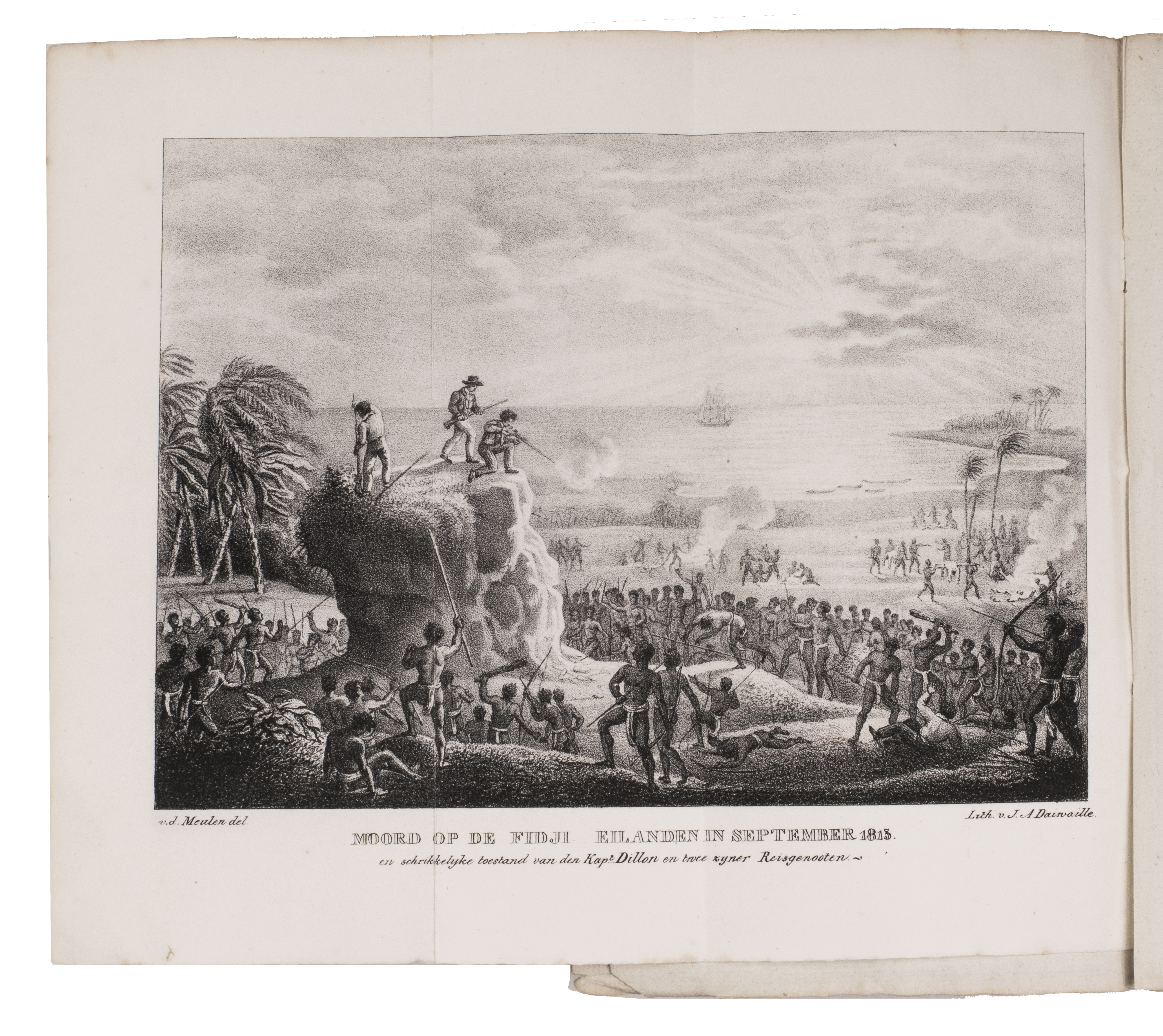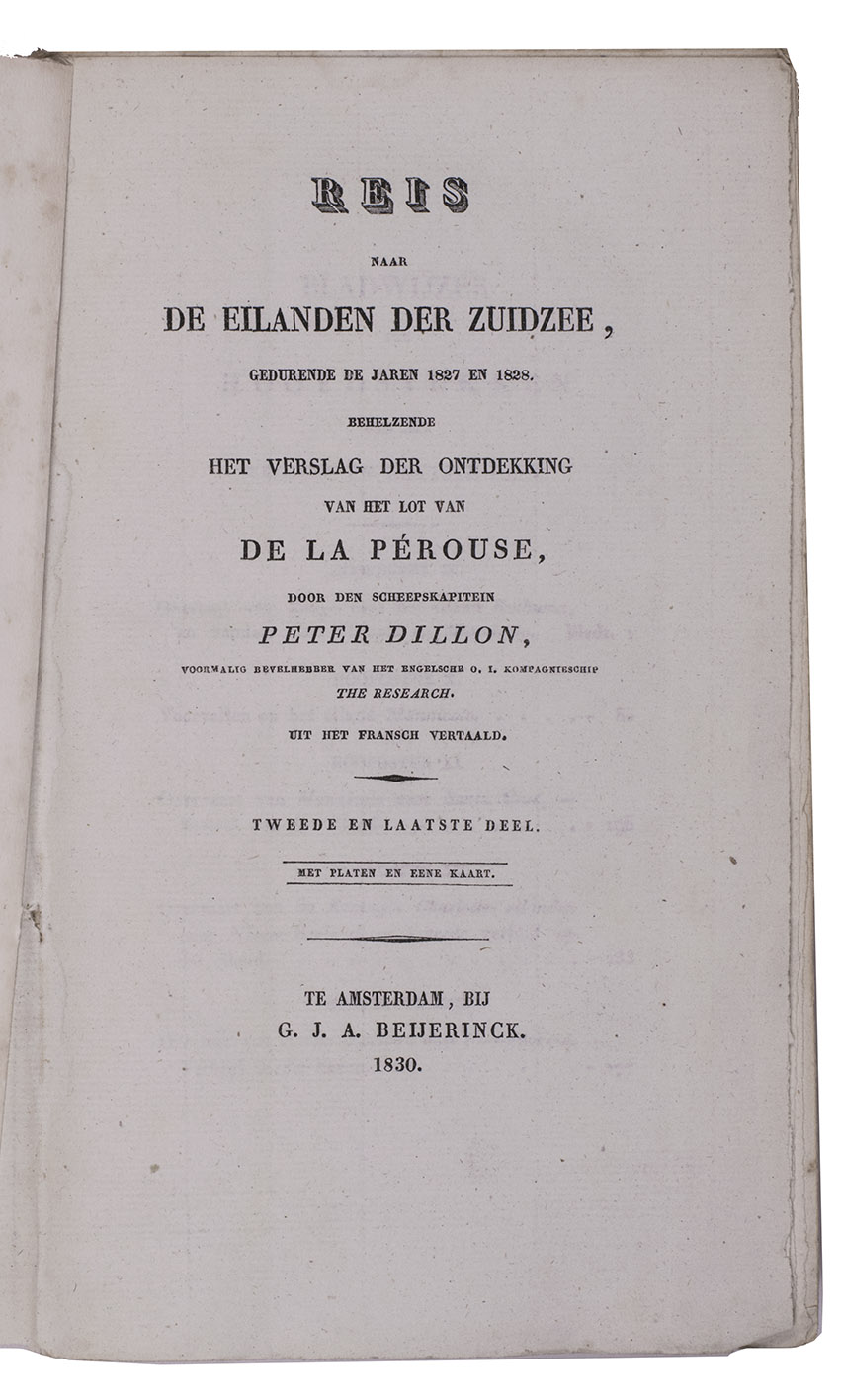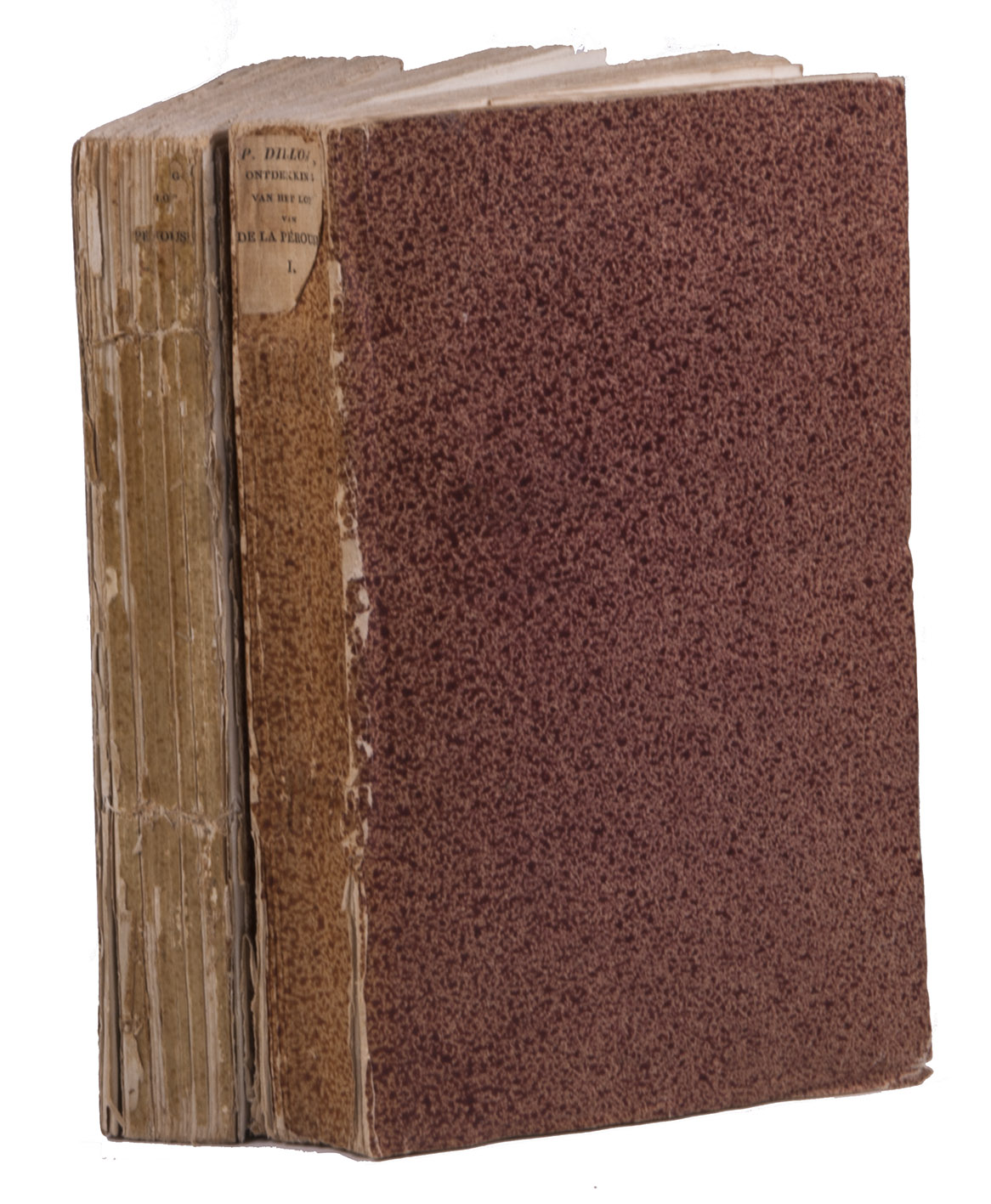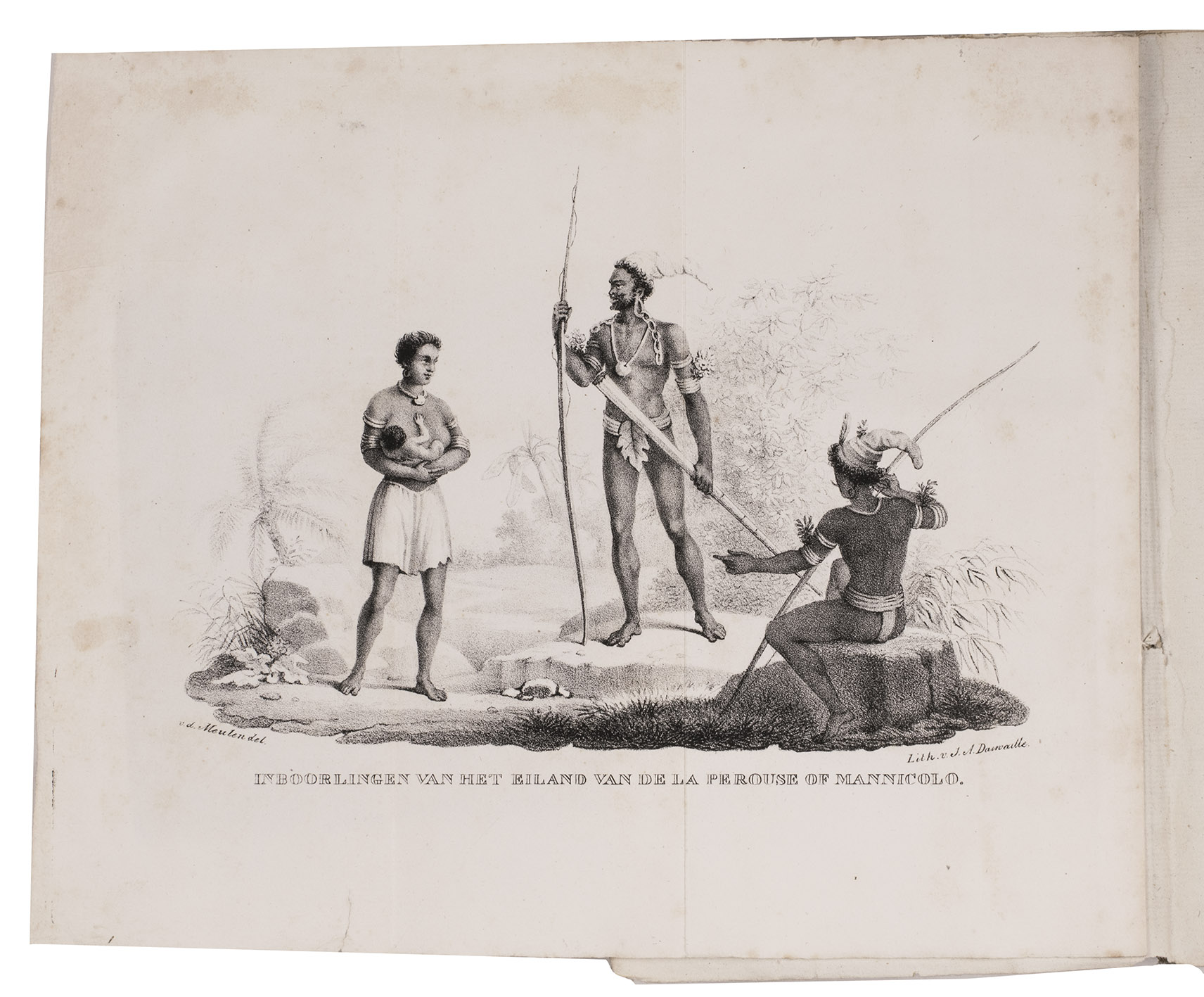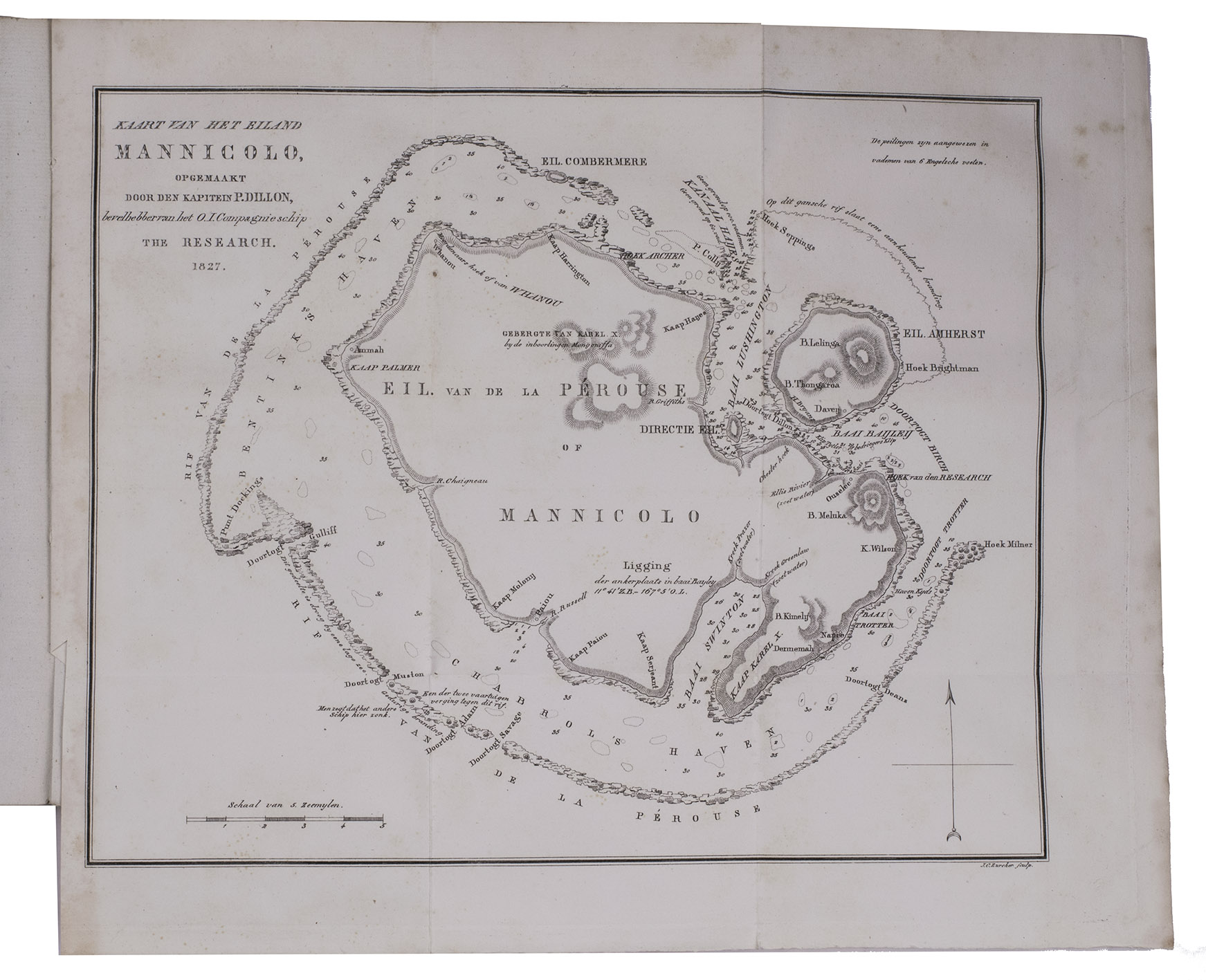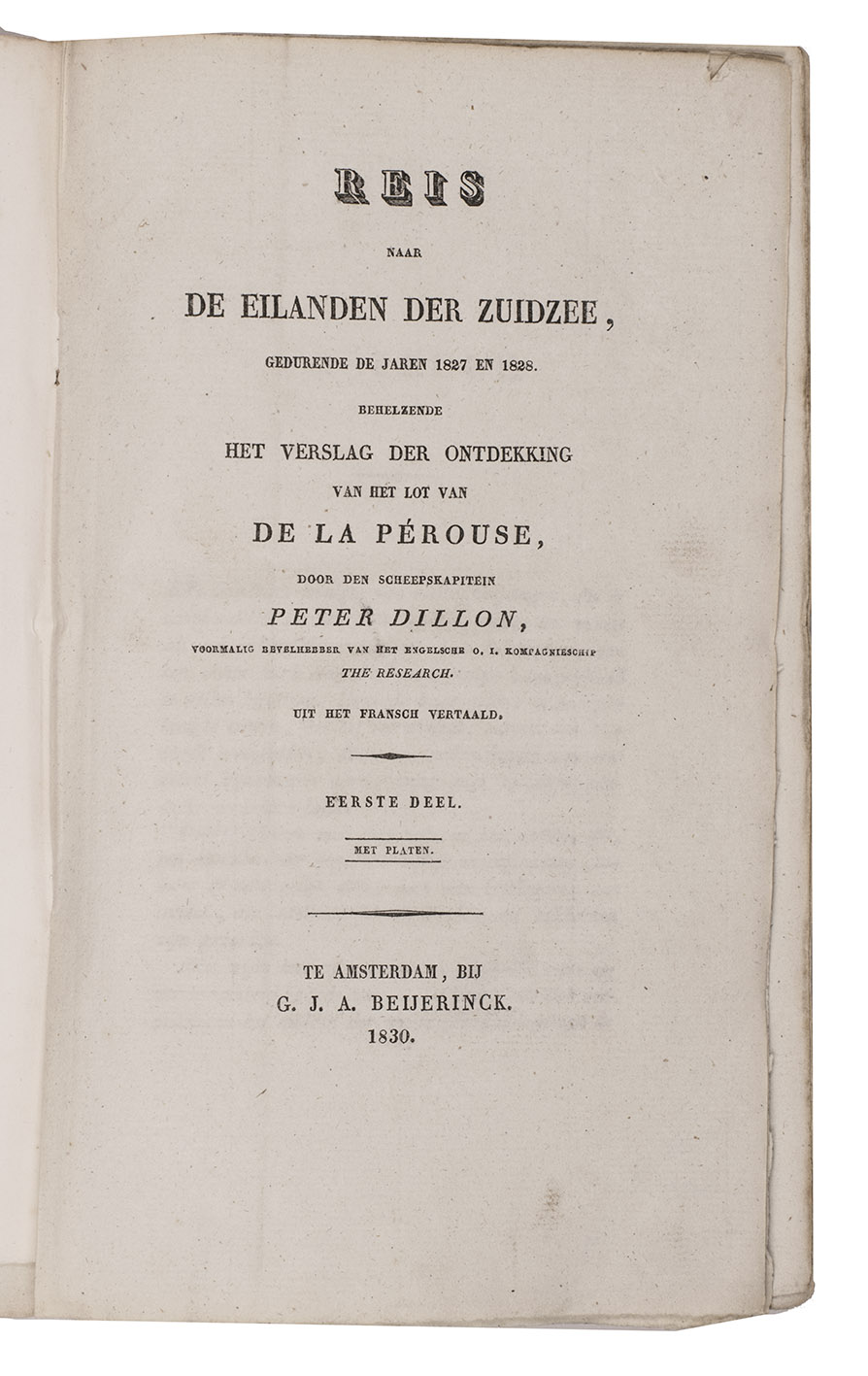DILLON, Peter.
Reis naar de eilanden der Zuidzee, gedurende de jaren 1827 en 1828, behelzende het verslag der ontdekking van het lot van De la Pérouse.
Amsterdam, G.J.A. Beijerinck, 1830. 2 volumes. 8vo. With 2 folding lithographed frontispieces and a folding engraved map of Vanikoro. The plates are new for this edition, lithographed by Jean Augustin Daiwaille after designs by (Pieter van der?) Meulen and based on the plates in the English edition. Contemporary stiff sprinkled paper wrappers. X, 336; VI, 350 pp.
€ 2,500
First and only edition of the Dutch translation. Translated from French but first published in English as Narrative and succesfull result of a voyage in the South Seas (London, 1829).
Explorer Peter Dillon (1788-1847) took it upon himself in 1828 to solve the mysterious disappearance of the French naval officer and fellow explorer Jean François de Galaup, Comte de La Pérouse. In 1785 the Frenchman set off on an expedition around the world, supported by Louis XVI and based on a plan by the Dutch explorer William Bolts. The goal was to explore the Pacific coasts of Australia and the islands in Oceania and the Far East, all the way to Kamchatka. He was the first European to set foot on the Hawaiian island Maui. The expedition vanished in 1788 when they set sail from Australia to New Caledonia, the Santa Cruz Islands and the Solomons. The Irish captain Peter Dillon was the second person who tried to find La Pérouse, following Admiral Bruni d'Entrecasteaux, who unknowingly got very close to finding the remaining crew in 1791. After looking all over in Australia, New Zealand and Tonga, Dillon sailed to Tikopia Island where the local people told him that ships had crashed on the reefs of the neighbouring island Vanikoro. He had to go to Calcutta first to get support from the British government in India and obtain a survey vessel to be able to get to Vanikoro. When he got there he found the remains of La Pérouses ships, thus solving the mystery. In the present book Dillon describes his two year exploration that led to his discovery. He incorporated passages from his earlier voyage to Fiji, where violence broke out and he had to hide on top of a rock to not get murdered. This rock is now called Dillon's Rock. He describes "cannibalist feasts" by the local inhabitants of Fiji.
Spines tattered, two leaves following the map detached, front board of the second volume detached, otherwise very good. Cat. NHSM, p. 145; not in Tiele, Bibl.; cf. Hill 480 (English ed.); Howgego, 1800-1850, D21.
Related Subjects:
